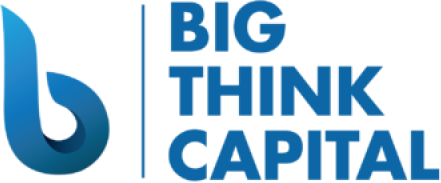Exploring the Impacts of Recent Fed Rate Decisions and Inflation Trends on Small Business Loans
Estimated Reading Time: 7 minutes
- Understand the Federal Reserve’s influence on borrowing costs.
- Evaluate how inflation trends impact small businesses.
- Explore various funding options available in the current climate.
- Learn strategies for optimizing cash flow and building credit health.
- Discover practical takeaways for navigating financing challenges.
Table of Contents
- Understanding the Federal Reserve’s Interest Rate Decisions
- How Current Inflation Trends Impact Small Businesses
- Utilizing Funding Options in the Current Financial Climate
- Effective Credit Score Management to Secure Small Business Funding
- Building Sound Bank Relationships
- Tools and Strategies for Optimizing Cash Flow
- Practical Takeaways for Business Owners Exploring Financing
- Conclusion
- FAQ
Understanding the Federal Reserve’s Interest Rate Decisions
The Federal Reserve plays a crucial role in shaping the economy through its monetary policy. By adjusting the federal funds rate, the Fed influences borrowing costs, spending, and investment in the economy. In 2025, the Fed’s decisions have been particularly impactful, reflecting ongoing adjustments to combat inflation and stimulate growth.
Recent Fed Rate Trends
In recent months, the Fed has increased its benchmark interest rate to tackle inflation, which surged following global disruptions and supply chain issues. The current federal funds rate is hovering around 5.25% to 5.50%, a notable rise compared to previous years. These changes mean higher borrowing costs for small businesses, translating into increased interest rates on loans and credit products.
Implications for Small Business Loans
For small business owners, the implications of these rising interest rates are profound:
- Borrowing Costs: With increased interest rates, the cost of borrowing rises, affecting the overall budget for small businesses. Owners may have to rethink their financing strategies and budget allocations.
- Loan Approval Rates: Higher rates typically lead to more stringent lending criteria. Lenders may become cautious, requiring stronger financials or collateral, which can make securing a loan more challenging.
- Consumer Demand: As borrowing costs rise, consumer spending may slow down, impacting sales for small businesses. This can create a cycle where businesses struggle to attain necessary funding.
How Current Inflation Trends Impact Small Businesses
Inflation remains a hot topic in economic discussions. The inflation rate in the U.S. was recorded at 4.3% in early 2025, illustrating the ongoing pressure on prices across various sectors. This inflationary trend creates several challenges and opportunities for small business owners.
Key Effects of Inflation on Small Business Financing
- Cost of Goods and Services: Rising prices for materials and services can squeeze profit margins. Small businesses need funding not just to grow but also to maintain operations during these inflationary periods.
- Cash Flow Management: With costs rising, maintaining positive cash flow becomes more critical. Small businesses are encouraged to leverage various financing options to ensure liquidity.
- Long-Term Planning: Inflation affects planning and budgeting. Business owners should not only adjust prices but also reassess financial strategies to sustain growth amid fluctuating costs.
Utilizing Funding Options in the Current Financial Climate
Given the dual challenges of rising interest rates and inflation, small businesses can consider a variety of funding options to navigate through these financial conditions:
1. Working Capital Advances
Working capital advances offer a quick influx of cash, often based on future credit card sales. This option can help businesses cover short-term operational costs without long-term debt commitments, making it a flexible solution for managing daily expenses.
2. Small Business Administration (SBA) Loans
SBA loans are a prime option for small businesses seeking lower interest rates and longer repayment terms. The government’s backing can make securing financing easier, but it’s important to note that these loans require thorough documentation and can take longer to process.
3. Merchant Cash Advances (MCA)
For businesses with fluctuating sales, considering a merchant cash advance can be beneficial. This funding type allows businesses to receive cash upfront based on future sales, which can be a lifesaver in times of cash flow challenges.
4. Business Lines of Credit
A business line of credit provides flexibility, allowing owners to draw funds as needed, making it an excellent choice for managing unexpected expenses. Interest is only paid on the money drawn, helping businesses maintain cash flow without incurring debt unnecessarily.
Effective Credit Score Management to Secure Small Business Funding
With economic pressures mounting, managing your business credit score is more important than ever. A strong credit score is essential for accessing various funding options.
Tips for Improving Your Business Credit Score
- Monitor Your Credit Report: Regularly review your credit report to ensure accuracy. Dispute any discrepancies promptly.
- Pay Bills on Time: Establish a payment schedule to ensure bills and debts are paid on time, as payment history significantly affects your credit score.
- Keep Debt Levels Manageable: Aim to use less than 30% of your available credit. Maintaining a good debt-to-credit ratio reflects positively on your creditworthiness.
- Build Relationships with Lenders: Developing rapport with banks and lenders can improve your chances for favorable loan terms. Ensure you are candid about your financial situation and seek guidance.
Building Sound Bank Relationships
In uncertain times, nurturing strong relationships with financial institutions can be a key asset for small businesses. Here are some strategies to build and maintain these relationships:
- Open a Business Bank Account: Establishing a business bank account creates a professional persona and helps develop rapport with your bank.
- Communicate Regularly: Keep in touch with your banker about your business’s performance, future needs, and any changes in your situation. Being proactive can position you as a reliable borrower.
- Seek Advice and Resources: Banks often offer additional resources beyond funding, including business advice and networking opportunities. Leverage these offerings to your advantage.
Tools and Strategies for Optimizing Cash Flow
In a landscape marked by rising costs and shifting economic conditions, adopting cash flow optimization strategies is vital. Here are some effective methods:
Forecasting and Budgeting
Create a robust cash flow forecast that accounts for expected income and expenses. This will help you identify potential shortfalls in advance and take action.
Implementing Efficient Invoicing Practices
Ensure your invoicing is prompt and clear. Consider offering discounts for early payments to encourage faster cash inflow.
Expense Management
Review expenses regularly and eliminate non-essential costs. This can free up cash to be used towards growth initiatives or emergency funds.
Practical Takeaways for Business Owners Exploring Financing
- Stay Informed: Understanding the impacts of Fed interest rate changes and inflation on financing options is crucial for making informed decisions.
- Leverage Multiple Funding Sources: Don’t rely solely on one type of financing. Have a mix of funding options ready to address various needs, whether for liquidity, expansion, or unforeseen expenses.
- Build and Maintain Strong Financial Health: Through proactive credit management, strong banking relationships, and diligent cash flow analysis, you can position your small business for success despite financial fluctuations.
Conclusion
Navigating the complexities of small business financing amidst changing financial conditions requires vigilance and strategic planning. At Big Think Capital, we are committed to providing you with the resources and funding options necessary to thrive in a challenging economic environment. To learn more about how we can assist you in securing the right financing for your business, visit us at bigthinkcapital.com or speak with one of our funding experts today. Your success is our priority, and we’re here to help you navigate the funding landscape.
FAQ
1. What is the current federal funds rate?
As of early 2025, the federal funds rate is between 5.25% and 5.50%.
2. How does inflation affect small business loans?
Inflation can increase borrowing costs, leading to higher interest rates and potentially more stringent lending criteria.
3. What are some good financing options for small businesses?
Some effective options include working capital advances, SBA loans, merchant cash advances, and business lines of credit.
4. Why is managing my credit score important?
A strong credit score increases your chances of securing favorable financing terms and accessing various funding options.
5. How can I optimize my cash flow?
Utilizing forecasting, efficient invoicing practices, and regular expense management are key strategies for optimizing cash flow.






